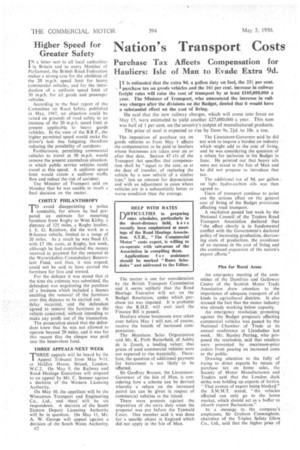Higher Speed for Greater Safety
Page 38

If you've noticed an error in this article please click here to report it so we can fix it.
IN a letter sent to all local authorities in Britain and to every Member of Parliament, the British Road Federation makes a strong case for the abolition of the 20 m.p.h speed limit for heavy commercial vehicles, and for the introduction of a uniform speed limit of 30 m.p.h. for all goods and passenger vehicles,
According to the final report of the Committee on Road Safety, published in May, 1947, no objection could be raised on grounds of road safety to an increase of the 20 m.p.h. speed limit at present applicable to heavy goods vehicles. In the view of the B.R.F., the higher permitted speed would make the driver's task less fatiguing, therefore reducing the possibility of accidents..
Furthermore, permitting commercial vehicles to travel at 30 m.p.h. would remove the present anomalous situation, in which public service vehicles Could travel at this speed. A uniform speed limit would create a uniform traffic flow and reduce the risk of accident.
The Minister of Transport said on Monday that he was unable to reach a final decision on the matter'.
























































































